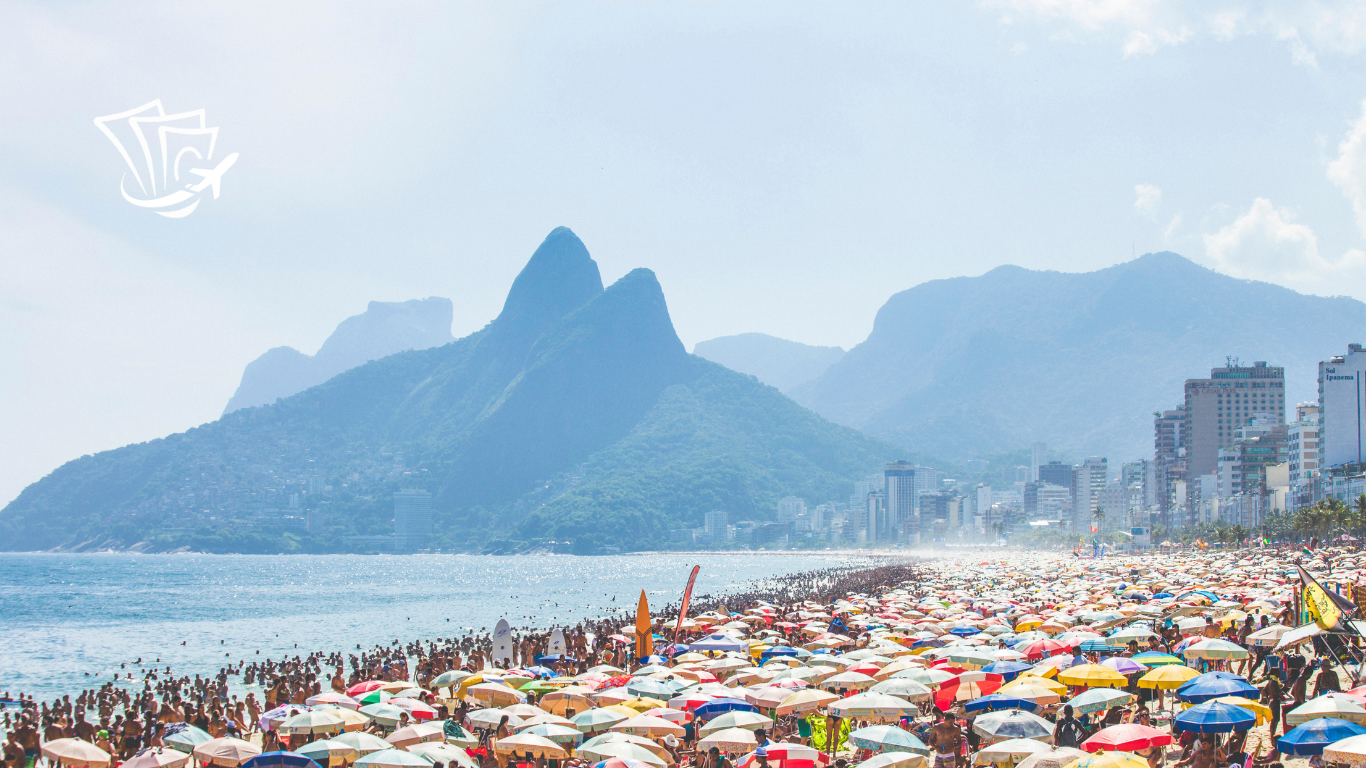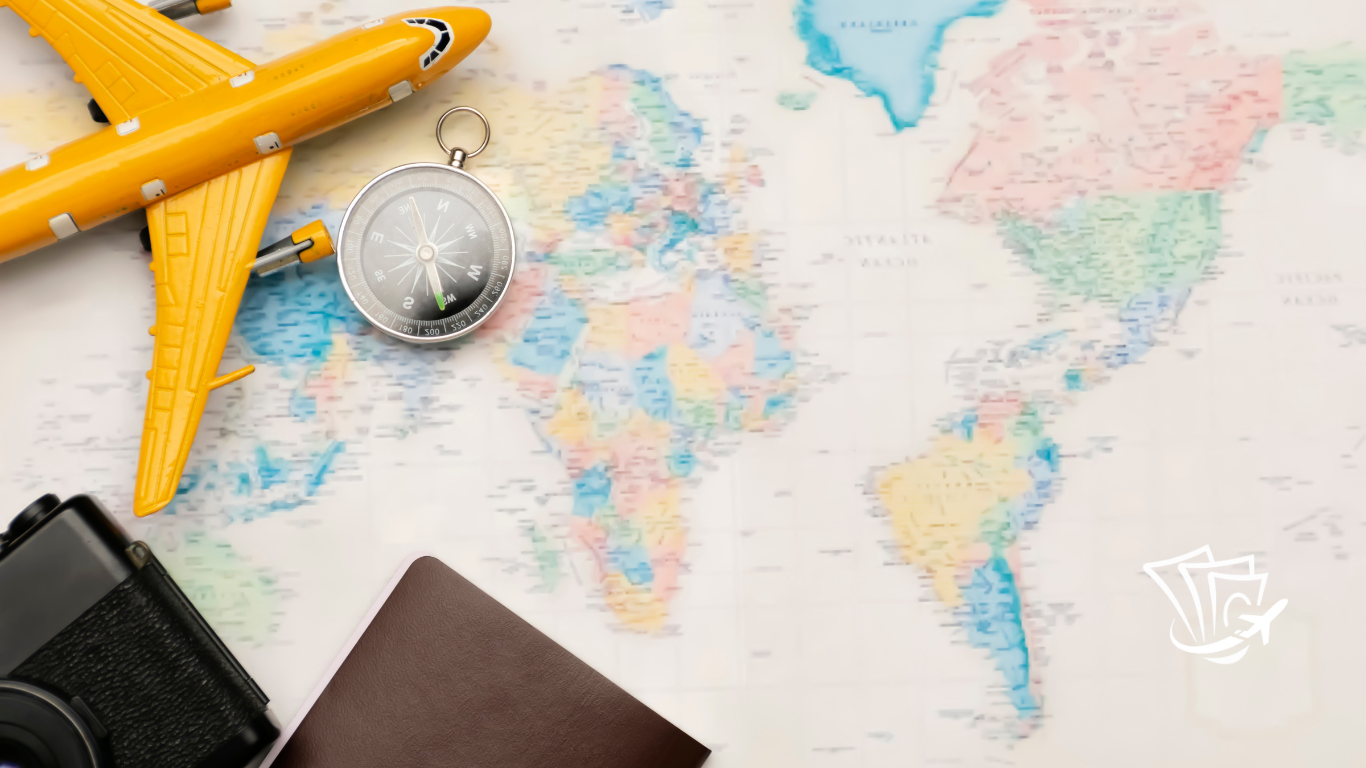In recent years, global tourism has experienced exponential growth, bringing economic benefits but also issues related to the excessive concentration of visitors in some tourist destinations. This phenomenon, known as overtourism, has a significant impact on both the quality of life of residents and on thetourist experience Of travelers. Iconic locations such as Venice, Barcelona and the Cinque Terre are facing difficulties related to the tourist overcrowding, with infrastructure under pressure, rising costs and degradation of cultural heritage.
Traveling is a right, but it also requires awareness and responsibility. Understanding the causes of overtourism, its negative effects, and strategies for sustainable tourism is essential to adopt practices of responsible tourism. In this article we will analyze this phenomenon in detail, exploring solutions to reduce environmental impact, improve the management of tourist flows and ensure a balance between economic development and preservation of cultural heritage. Find out how to avoid the mass tourism and adopt a more sustainable approach in your travels.

Overtourism: what is it and why is it a problem for travelers?
L’overtourism is a phenomenon that occurs when the number of tourists exceeds the capacity of a destination to handle visitors without negative impacts on the environment, infrastructure and quality of life of residents. This problem is most prevalent in large art cities, UNESCO sites, and popular nature destinations.
In recent years, many destinations have begun to suffer the consequences of tourist overcrowding, with visible effects on:
- Overloaded public transportation: Cities cannot handle the high number of daily trips.
- Rising cost of living: The housing market inflates, making it difficult for residents to find affordable housing.
- Loss of cultural authenticity.: local stores and services are being replaced by businesses geared exclusively to tourism.
- Deterioration of infrastructure: historical monuments and natural sites wear out more rapidly.
The problem ofovertourism in Italy is particularly felt in cities such as Venice, Florence, Rome and Milan, but it also affects seaside and mountain destinations, such as the Cinque Terre, Capri and the Amalfi Coast..
Why is overtourism on the rise? The main causes
Overtourism, or tourist overcrowding, has emerged as a major challenge for the world’s most popular destinations. The causes of this phenomenon are multiple and interconnected, stemming from significant changes in the tourism industry and travelers’ habits.
In 2024, international tourism experienced a significant recovery, with about 1.4 billion arrivals globally, marking a 99 percent recovery from pre-pandemic levels. In Italy, tourist arrivals reached 458.5 million, with an increase of 2.5 percent over 2023. While this exponential growth has boosted the industry’s economy, it has also accentuated the phenomenon of overtourism in several key destinations.
Exponential growth of global tourism
In recent decades, international tourism has experienced unprecedented growth. According to the World Tourism Organization (UNWTO), international tourist arrivals have grown from 674 million in 2000 to more than 1.4 billion in 2019. This growth has been fueled by several factors:
- Improved economic conditions: Increased disposable income in many regions of the world has made international travel more accessible to more people.
- Globalization: Increasing interconnectedness between countries has facilitated travel and promoted greater curiosity about different cultures.
- Visa liberalization policies.: Many countries have simplified visa procedures, further encouraging international travel.
These factors have contributed to a growing demand for tourism experiences, often concentrated in specific iconic destinations.

Expansion of low-cost airlines
The advent and rapid expansion of low-cost airlines have revolutionized the transportation industry, making air travel cheaper and more accessible. These companies offer flights at significantly lower fares than traditional airlines, enabling more and more people to travel frequently and to destinations previously considered expensive or difficult to reach.
For example, in Europe, companies such as Ryanair and EasyJet have expanded their routes, connecting secondary cities and promoting tourism to lesser-known destinations. However, this has also led to an increase in “hit-and-run” tourism, with visitors spending short periods in a destination, contributing to overcrowding without bringing significant economic benefits to local economies.
Diffusion of short-term rental platforms
The growth of platforms such as Airbnb and Booking.com has transformed the hospitality landscape. These services allow owners to rent out their homes or rooms to tourists for short periods, increasing the accommodation capacity of cities without the need to build new hotel facilities.
Although this gives travelers cheaper and more authentic options, it has also had negative consequences:
- Rising rents.: In many cities, landlords prefer to rent to tourists at higher rates, reducing the availability of affordable housing for residents.
- Gentrification: Traditionally residential neighborhoods are transformed into tourist areas, altering the social and cultural fabric of local communities.
- Insufficient regulation: Many cities struggle to effectively regulate these rentals, leading to problems such as tax evasion and loss of control over urban development.
For example, cities such as Barcelona and Venice have introduced regulations to limit short-term rentals in an effort to preserve local communities and mitigate the effects of overtourism.
Aggressive marketing of tourist destinations
Tourism marketing campaigns play a crucial role in attracting visitors. However, excessive or unbalanced promotion can contribute to overcrowding in some destinations.
Many cities and towns invest considerable resources in advertising campaigns to promote their main attractions, often without considering the carrying capacity of local infrastructure or the impact on the resident population. This can lead to:
- Concentration of tourist flows.: Tourists tend to visit the same attractions, causing overcrowding in certain areas while others remain neglected.
- Overuse of resources.: Intensive use of historic or natural sites can lead to their degradation or damage.
- Homogeneous tourism experiences: Standardization of tourism offerings can reduce the authenticity of the experience for visitors.
For example, the massive promotion of events such as the Venice Carnival or the San Firmino Festival in Pamplona attracts hundreds of thousands of tourists in short periods, putting a strain on the capacities of host cities.
Social media influence and tourism trend “Instagrammable”
In recent years, social media has transformed the way people choose their travel destinations. Platforms such as Instagram, TikTok and YouTube have helped create a phenomenon known as “Instagrammable” tourism., in which travelers select destinations primarily for their photogenicity and popularity on social networks.
The viral images of heavenly beaches, picturesque villages and iconic monuments attract millions of visitors, often without adequate infrastructure to handle the influx. This phenomenon has led to a large increase in tourism concentrated in a few places, creating problems of Overcrowding and environmental degradation.

Negative Effects of Overtourism
Overtourism has profound impacts on popular destinations. Let’s look at the main ones:
Environmental impact
The uncontrolled increase in tourist flows has generated significant environmental consequences, putting some of the most fragile ecosystems on the planet at risk. Mass tourism can result in:
- Damage to natural ecosystems.: Excessive trampling in protected areas, collection of natural souvenirs such as corals or shells, and excessive urbanization for tourism purposes endanger biodiversity.
- Air pollution and increased waste: CO₂ emissions derived from tourist transportation, such as airline flights, cruises, and tour buses, contribute to climate change. In addition, waste generation in areas with high tourist density often exceeds local disposal capacity.
- Exploitation of natural resources.: Increased demand for water and energy in tourist areas often exceeds the regeneration capacity of the land, causing water stress in popular destinations.
Economic and social effects
Overtourism is not limited to environmental impacts, but profoundly alters the economic and social balance of local communities. Among the most significant effects are:
- Local population exodus: The steep rise in short-term tourist rentals has made the cost of living unaffordable for residents, forcing them to leave the historic centers.
- Gentrification: the replacement of traditional stores and services with activities geared exclusively to tourists leads to the loss of cultural identity and the transformation of cities into tourist “theme parks.”
- Difficulties for local businesses.: Mass tourism often favors large international chains, penalizing small local businesses, which cannot compete with the prices and visibility of large commercial groups.
Deterioration of the tourism experience
Overtourism not only harms the environment and local communities, but also has a direct impact on the quality of the visitor experience itself. The main problems include:
- Long lines to access major attractions: Overcrowding makes it difficult to fully enjoy monuments and historical sites, often with excessive waiting times.
- Difficulties in movement and urban congestion: roads and public transportation become overcrowded, compromising the quality of visitation and the daily life of residents.
- Rising prices for accommodations and services.: High tourist demand drives up the cost of hotels, restaurants and services, making destinations less affordable for budget travelers.
To reduce these impacts, many destinations are introducing sustainable tourism management strategies, such as access regulations, incentives for off-season tourism, and awareness campaigns aimed at travelers to promote more responsible behavior.

How Overtourism Impacts Airline Flights.
Overtourism not only affects tourist destinations, but also has direct repercussions on the air transport sector. The massive increase in tourist flows can lead to:
- Overcrowding at airports.: Congested terminals can cause delays in boarding and disembarking operations.
- Overbooking: Airlines, anticipating high demand, may sell more tickets than available seats, increasing the risk that some passengers will be left stranded.
- Delays and cancellations: Increased air traffic can overload traffic control, leading to flight delays or cancellations.
For example, during high-profile events such as the 2025 Jubilee in Rome, it is expected that 35 million arrivals e 105 million presences, resulting in increased pressure on the capital’s airports.
Regulation of Access
Many cities and tourist sites have begun to introduce limitations on the number of visitors to preserve cultural and natural heritage. Some examples include:
- Venice: has imposed an entrance fee for day visitors and is experimenting with a reservation system for the historic center.
- Machu Picchu: The Peruvian archaeological site has implemented access time slots and a daily visitor limit to reduce erosion of the site.
- Cinque Terre: The National Park has introduced a limited number ticket system to avoid overcrowding on hiking trails.
Limiting tourist access helps preserve the integrity of destinations, ensuring a more authentic and sustainable experience for visitors.
Tourist Taxes and Sustainability Policies.
The application of tourism taxes is one of the most common strategies to counteract overtourism. These funds are used to maintain local infrastructure, manage waste, and fund sustainable initiatives. Some examples:
- Amsterdam: raised the tourist tax to fund street cleaning and improve the quality of life for residents.
- Barcelona: uses a tourist tax to support the maintenance of the historic center and limit the negative effects of mass tourism.
- Bali: introduced an environmental tax for international visitors, which is intended to protect the island’s natural ecosystems.
Diversification of Destinations
One of the most effective solutions to reduce pressure on popular tourist destinations is the promotion of alternative destinations. This approach distributes tourist flows more evenly, offering new experiences to travelers and economically benefiting other lesser-known areas.
- France: Normandy region is being promoted as an alternative to Paris to offer authentic cultural experiences without the overcrowding of the capital.
- Italy: lesser-known villages such as Civita di Bagnoregio and Sabbioneta are being enhanced as tourist destinations for those seeking authenticity and tranquility.
- Japan: government promotes visiting lesser-visited cities such as Kanazawa to relieve pressure on Kyoto and Tokyo.
Awareness Raising and Responsible Tourism
Educating tourists on the importance of responsible behavior is crucial to reducing the negative impacts of mass tourism. Awareness campaigns aim to encourage more sustainable practices among travelers, such as:
- Avoid peak hours to visit the main attractions.
- Reduce the use of single-use plastics and comply with local waste management regulations.
- Choose environmentally sustainable facilities and certified tour operators to minimize environmental footprint.
Many governments and tourism organizations are launching initiatives to promote responsible tourism. For example, the UN has included sustainable tourism among the goals of Agenda 2030, encouraging policies that balance economic growth with the protection of the environment and local communities.

Overtourism in Italy: the most affected cities
Italy is one of the most visited tourist destinations in the world, with millions of visitors each year flocking to its art cities, coastlines and historic villages. However, this success comes at a price: many destinations suffer the effects of overtourism, with significant impacts on local infrastructure, residents’ quality of life and the environment.
The problem of tourist overcrowding in Italy is evident in the most iconic cities, where local governments are trying to take measures to mitigate the negative effects and make tourism more sustainable. Entry restrictions, regulations on short rentals and the introduction of tourist taxes are some of the solutions adopted to try to contain the phenomenon. However, balancing maintaining tourist attractiveness with protecting cultural and environmental heritage is an ongoing challenge.
Below, we look at some of the Italian cities most affected by overtourism and the strategies put in place to counter it.
Venice
Venice is perhaps the most emblematic example of overtourism in Italy. With a steadily decreasing resident population, which fell below 50,000 in 2023, the lagoon city welcomes more visitors on a daily basis than often exceeds the number of residents. In 2024, local authorities introduced a 5-euro entrance fee for day visitors during peak periods, with the aim of discouraging hit-and-run tourism and raising funds for city maintenance. However, in 2025, the fee was doubled to 10 euros for last-minute bookings and also extended the number of days it is charged in an effort to better manage tourist flows.
Florence
Florence, with its extraordinary artistic and cultural heritage, attracts millions of tourists every year. In 2024, the city recorded nearly 9 million overnight stays and about 1.5 million daily visitors. To address overtourism, the city administration has adopted a 10-point plan that includes a ban on the installation of key boxes for short rentals in the historic center and the use of loudspeakers by tour guides. These measures aim to preserve livability for residents and manage the impact of mass tourism.
Rome
The Italian capital is one of the most visited cities in the world, with iconic attractions such as the Colosseum, the Vatican and the Trevi Fountain. According to a study by Eurispes, Rome ranks 13th among the cities most affected by overtourism globally. To mitigate the effects of overcrowding, authorities have implemented measures such as a ban on sitting on the Spanish Steps and restrictions on tour buses in the historic center.
Five Lands
The picturesque Cinque Terre on the Ligurian coast has become a popular destination, attracting millions of tourists each year. The fragility of the area and the massive influx of visitors have prompted local authorities to introduce a number-ticket system for hiking trails in order to preserve the environment and ensure the safety of tourists. In 2016, there had been speculation to limit the number of visitors to 1.5 million per year, but the proposal met with resistance and was not fully implemented.
Rimini
Rimini, a well-known seaside resort on the Adriatic, is among the Italian cities with a “very high” index of overtourism. According to the Overall Index of Tourist Overtourism (ICST) prepared by Demoskopika, Rimini has a high tourist density, with significant impacts on waste management and residents’ quality of life.
How to Solve the Problem of Overtourism
Overtourism is a complex challenge that requires multi-level interventions to be effectively addressed. Tourist destinations must adopt targeted strategies to reduce the impact of overtourism and ensure sustainable development. Solutions can range from regulating access to diversifying tourism offerings to raising awareness among travelers to promote more responsible behavior. Let’s look in detail at some of the most effective strategies.
What to Do in the Event of Air Disruptions Related to Overtourism
If during your travels you face airline inconveniences such as delays, cancellations or overbooking due to tourist overcrowding, it is important to know that you have rights as a passenger. Here are some tips on how to proceed:
- Document everything: Keep copies of tickets, boarding passes, and any communication received from the airline.
- Request immediate assistance: Contact the company’s service desk to get information about your flight and possible alternatives.
- Know your rights: According to European regulations, you may be entitled to financial compensation in case of long delays, cancellations or denied boarding.
- Contact the experts: We at Refund on the Fly We specialize in protecting the rights of air passengers. If you have suffered an inconvenience, visit our website to see if you are entitled to compensation and to receive free assistance in handling your case.
Coping with overtourism requires awareness and preparation. Becoming informed and knowing how to react in case of inconvenience can turn a negative experience into an opportunity to assert one’s rights.
Conclusion
Overtourism represents one of the most pressing challenges for the tourism sector, requiring concrete solutions to balance the influx of visitors with the protection of cultural and environmental heritage. The strategies adopted by many cities, including. entry restrictions, tourist taxes and regulations on short rentals, are key steps to reduce the impact of mass tourism.
However, the responsibility does not only fall on local governments: the travelers can make all the difference. Opting for less crowded destinations, respecting local regulations, and choosing more sustainable tourism are actions that help make travel a more authentic and responsible experience.
If you travel frequently and have experienced inconvenience related to cancelled flights, delays or overbooking, Remember that you are entitled to a refund! At Refund on Flight We help you assert your rights quickly and easily. Check our website to see if you are entitled to compensation and always travel with the security of reliable assistance by your side.


